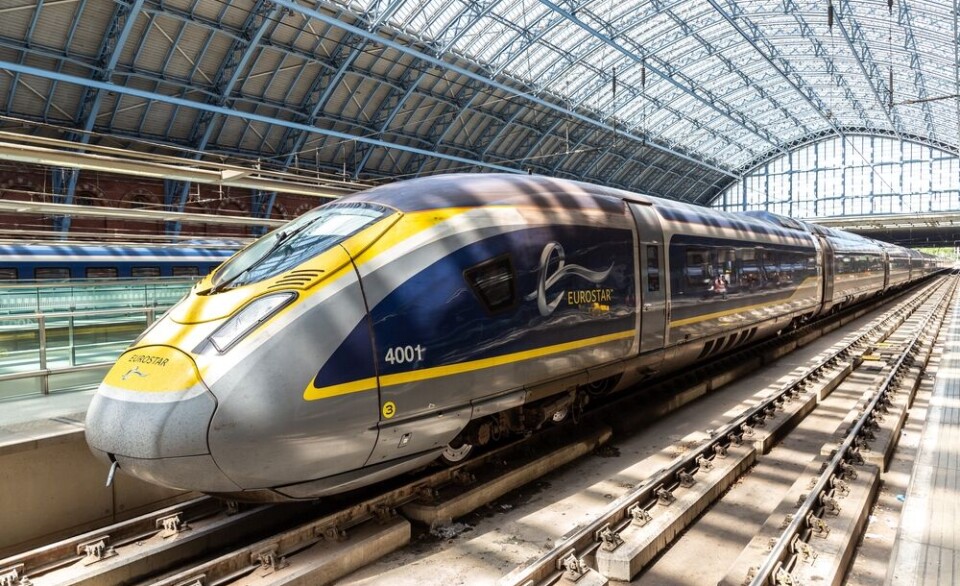EES start date confirmed for Dover to Calais ferries
Non-EU nationality travellers will be directed towards a new area to use pre-registration kiosks
Three ferry companies run trips to France from Dover port
Pandora Pictures/Shutterstock.
How will new EU border changes affect you?
Connexion subscribers can read our help guide to the EES and Etias for free on the Subscriber Resources page here.
If you are not subscribed to the Connexion either click here to subscribe or click here to purchase the guide for €9.50.
The Port of Dover will be among the first ‘French’ border sites to start operations of the European Entry/Exit System (EES), the port authority says.
As the EES gets under way in a ‘phased’ rollout starting on October 12, the UK’s busiest ferry port, which sees millions crossing the Channel each year, will start immediately but initially only for coach passengers.
All other passengers, notably those coming by car as well as those coming on motorbikes, or on foot with P&O, will be subject to it a few weeks later, from November 1.
EES is set to require all visitors to the EU’s Schengen area who are not EU, EEA or Swiss citizens to register to create a new entry in a central EU database.
They will have to give passport information, answer short travel questions and have a facial image and a scan of the fingerprints of the right hand.
On future trips, their entries and exits from the Schengen area will be logged automatically by the system, thus eventually replacing the use of passport stamps.
This partly aims at improving security at the borders and also at better control of respect of the Schengen area’s rule that visa-exempt visitors should stay no more than 90 days in any rolling 180-day period.
A phased approach
New regulations provide that EES will not start at all Schengen border crossing points from day one, but at a selection of them, with the number of points gradually increasing over six months to full operation everywhere.
A crossing point refers to a particular port, airport or station where people can enter from outside the Schengen area or leave the area to go to an outside destination.
In France, this includes 70 airports, 30 ports and half a dozen stations, including the French check points at Dover port for P&O, DFDS and Irish Ferries passengers; at London St Pancras for Eurostar and near Folkestone for Eurotunnel.
The phased start regulations recommend that states begin immediately with a combination of air, land and sea crossing points.
Countries do not have to start progressively, but France will. All EU countries have been asked to provide the European Commission with an overall plan by September 24 of how they will roll out the phased start.
Each crossing point is working out its own plan in discussions with the French government, and may decide to start with only some passengers and not others.
The taking of biometric data – a facial image and scan of fingerprints – is not obligatory in the first three months, the regulations say.
Eurostar previously told The Conexion, it is “fully prepared to begin from day one”, although has not yet confirmed if it is in fact doing so.
Eurotunnel is also thought to be likely to start for some passengers as soon as possible (update: read more here).
What will the process be at Dover?
Dover is a major crossing point between the UK and France, with three firms offering Dover-Calais ferries. DFDS also runs ferries to Dunkirk.
A new area has been created in the western docks area for coaches to park.
Coach passengers will need to leave the vehicle to use one of 24 self-service EES pre-registration kiosks to enter some of their data before they pass through a border.
The coach will then be ‘sealed’ and will proceed to the check-in area at the ferry terminal.
From November 1, cars will also be directed to a new area of reclaimed land in the western docks near the coach building.
Occupants will leave their car and go into a building to pre-register at kiosks and provide their biometrics. They will then drive to the eastern docks, where there will be final checks by border guards.
On subsequent exits, once people are in the system, they will go directly to the eastern docks.
Travellers not affected by the new checks, ie because they are EU citizens or they are residents of France, will also be able to bypass the pre-registration procedures and go directly to the border.




























